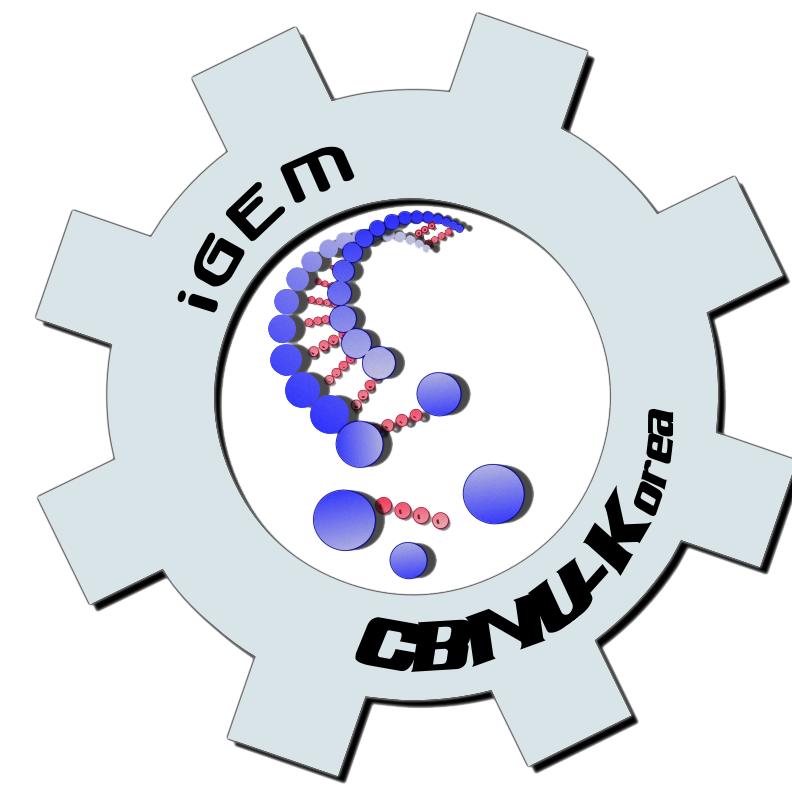Team:Tsinghua/Project
From 2009.igem.org
(→Frontiers in Gene Therapy Research) |
(→References) |
||
| Line 100: | Line 100: | ||
[2] SM Selkirk. Gene therapy in clinical medicine. ''Postgraduate Medical Journal''.2004;80:560-570; doi:10.1136/pgmj.2003.017764 | [2] SM Selkirk. Gene therapy in clinical medicine. ''Postgraduate Medical Journal''.2004;80:560-570; doi:10.1136/pgmj.2003.017764 | ||
| - | [3] | + | [3] RC Mulligan. The basic science of gene therapy. ''Science'', 1993, Vol 260, Issue 5110, 926-932. |
| - | [4] | + | [4] Janaiah Kota, Raghu R. Chivukula, Kathryn A. O’Donnell, Erik A. Wentzel, Chrystal L. Montgomery, Hun-Way Hwang, Tsung-Cheng Chang, Perumal Vivekanandan, Michael Torbenson, K. Reed Clark, Jerry R. Mendell,and Joshua T. Mendell. Therapeutic microRNA Delivery Suppresses Tumorigenesis in a Murine Liver Cancer Model. ''Cell''. 2009, 137. 1005–1017. |
| - | [5] | + | [5] WHO (February 2006). "Cancer". World Health Organization. http://www.who.int/mediacentre/factsheets/fs297/en/. Retrieved on 2007-06-25. |
| - | [6] | + | [6] American Cancer Society (December 2007). "Report sees 7.6 million global 2007 cancer deaths". Reuters. http://www.reuters.com/article/healthNews/idUSN1633064920071217. Retrieved on 2008-08-07. |
| - | [7] Chemotherapy and you: A guide to self-help during cancer treatment. National Institutes of Health Web site. Available at: http://www.cancer.gov/PDF/b21d0a74-b477-41ec-bdc0-a60bbe527786/chemoandyou.pdf. Accessed July 31, 2006. | + | [7] Peter Sinnaeve, Olivier Varenne, Désiré Collen, and Stefan Janssens. Gene therapy in the cardiovascular system: an update. ''Cardiovasc Res'', Dec 1999; 44: 498 - 506. |
| + | |||
| + | [8] Chemotherapy and you: A guide to self-help during cancer treatment. National Institutes of Health Web site. Available at: http://www.cancer.gov/PDF/b21d0a74-b477-41ec-bdc0-a60bbe527786/chemoandyou.pdf. Accessed July 31, 2006. | ||
Revision as of 06:56, 27 June 2009
| You can write a background of your team here. Give us a background of your team, the members, etc. Or tell us more about something of your choosing. | |
|
Tell us more about your project. Give us background. Use this is the abstract of your project. Be descriptive but concise (1-2 paragraphs) | |
| Team Example 2 |
| Home | The Team | Brainstorming | The Project | Parts Submitted to the Registry | Modeling | Notebook |
|---|
(Or you can choose different headings. But you must have a team page, a project page, and a notebook page.)
Contents |
Overall project
Your abstract
Background
Gene Therapy
Gene therapy is the insertion of genes into an individual's cells and tissues to treat a disease, such as a hereditary disease in which a deleterious mutant allele is replaced with a functional one[1]. Although the technology is still in its infancy, it is one of the most promising and active research fields in medicine[1,2]. Antisense therapy is not strictly a form of gene therapy, but is a genetically-mediated therapy and is often considered together with other methods[1].
Vectors in Gene Therapy
Despite substantial progress, a number of key technical issues need to be resolved before gene therapy can be safely and effectively applied in the clinic, and an ideal gene delivery vector is one of the bottlenecks in gene therapy application[3]. Generally, vectors applied in gene therapy can be classified into viral or non-viral.
Viral Methods
All viruses bind to their hosts and introduce their genetic material into the host cell as part of their replication cycle. This genetic material contains basic 'instructions' of how to produce more copies of these viruses, hijacking the body's normal production machinery to serve the needs of the virus[1].
Adenovirus.
Adeno-associated virus.
Retroviruses.
Non-Viral Methods
Non-viral methods present certain advantages over viral methods, with simple large scale production and low host immunogenicity being just two. Previously, low levels of transfection and expression of the gene held non-viral methods at a disadvantage; however, recent advances in vector technology have yielded molecules and techniques with transfection efficiencies similar to those of viruses[1].
Naked DNA.
Oligonucleotides.
Lipoplexes and polyplexes.
Frontiers in Gene Therapy Research
Induced Pluripotent Stem Cell (iPS) and Gene Delivery System
Therapeutic microRNA Delivery
Therapeutic strategies based on modulation of microRNA (miRNA) activity hold great promise due to the ability of these small RNAs to potently influence cellular behavior[4].
Cancer Gene Therapy
As a primary threat of human health, cancer causes about 13% of all human deaths[5]. According to the American Cancer Society, 7.6 million people died from cancer in the world during 2007[6]. Current treatments often have far reaching negative side effects[7]. The systemic toxicity of chemotherapy regimens still often result in acute and delayed nausea, mouth ulcerations and mild cognitive impairments[8].
Project Details
Introduction
Basic Idea
The Experiments
Project 1
Project 2
Project 1 and Project 2
Results
Project 1
Project 2
References
[1] http://en.wikipedia.org/wiki/Gene_therapy
[2] SM Selkirk. Gene therapy in clinical medicine. Postgraduate Medical Journal.2004;80:560-570; doi:10.1136/pgmj.2003.017764
[3] RC Mulligan. The basic science of gene therapy. Science, 1993, Vol 260, Issue 5110, 926-932.
[4] Janaiah Kota, Raghu R. Chivukula, Kathryn A. O’Donnell, Erik A. Wentzel, Chrystal L. Montgomery, Hun-Way Hwang, Tsung-Cheng Chang, Perumal Vivekanandan, Michael Torbenson, K. Reed Clark, Jerry R. Mendell,and Joshua T. Mendell. Therapeutic microRNA Delivery Suppresses Tumorigenesis in a Murine Liver Cancer Model. Cell. 2009, 137. 1005–1017.
[5] WHO (February 2006). "Cancer". World Health Organization. http://www.who.int/mediacentre/factsheets/fs297/en/. Retrieved on 2007-06-25.
[6] American Cancer Society (December 2007). "Report sees 7.6 million global 2007 cancer deaths". Reuters. http://www.reuters.com/article/healthNews/idUSN1633064920071217. Retrieved on 2008-08-07.
[7] Peter Sinnaeve, Olivier Varenne, Désiré Collen, and Stefan Janssens. Gene therapy in the cardiovascular system: an update. Cardiovasc Res, Dec 1999; 44: 498 - 506.
[8] Chemotherapy and you: A guide to self-help during cancer treatment. National Institutes of Health Web site. Available at: http://www.cancer.gov/PDF/b21d0a74-b477-41ec-bdc0-a60bbe527786/chemoandyou.pdf. Accessed July 31, 2006.
 "
"

